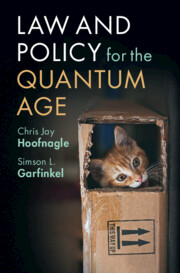Book contents
- Frontmatter
- Contents
- List of Figures
- List of Tables
- Preface
- Acknowledgments
- Introduction
- Part 01 Quantum Technologies
- 1 Small Phenomena, Big Implications
- 2 Quantum Sensing and Metrology
- 3 Understanding Computation
- 4 The Birth of Quantum Computing
- 5 Quantum Computing Applications
- 6 Quantum Computing Today
- 7 Quantum Communications
- Part 10 Shaping the Quantum Future
- Appendices
- Index
- Colophon
5 - Quantum Computing Applications
from Part 01 - Quantum Technologies
Published online by Cambridge University Press: 18 November 2021
- Frontmatter
- Contents
- List of Figures
- List of Tables
- Preface
- Acknowledgments
- Introduction
- Part 01 Quantum Technologies
- 1 Small Phenomena, Big Implications
- 2 Quantum Sensing and Metrology
- 3 Understanding Computation
- 4 The Birth of Quantum Computing
- 5 Quantum Computing Applications
- 6 Quantum Computing Today
- 7 Quantum Communications
- Part 10 Shaping the Quantum Future
- Appendices
- Index
- Colophon
Summary
The risk of wide-scale cryptanalysis pervades narratives about quantum computing. We argue in this chapter that Feynman's vision for quantum computing will ultimately prevail, despite the discovery of Peter Shor's factoring algorithm that generated excitement about a use of quantum computers that people could understand---and dread. Feynman's vision of quantum devices that simulate complex quantum interactions is more exciting and strategically relevant, yet also more difficult to portray popular descriptions of technology. The Feynman vision for quantum computing will lead to applications that benefit humans in multifarious and unforeseen ways, just like the classical computing revolution improved our lives. Feynman's vision may also enable a ``winner-take-all'' outcome in building a large quantum computer. \par To explain this outcome, we canvass the three primary applications that have been developed for quantum computing: Feynman's vision of simulating quantum mechanical
Keywords
- Type
- Chapter
- Information
- Law and Policy for the Quantum Age , pp. 173 - 228Publisher: Cambridge University PressPrint publication year: 2022
- Creative Commons
- This content is Open Access and distributed under the terms of the Creative Commons Attribution licence CC-BY-NC-ND 4.0 https://creativecommons.org/cclicenses/
- 1
- Cited by



